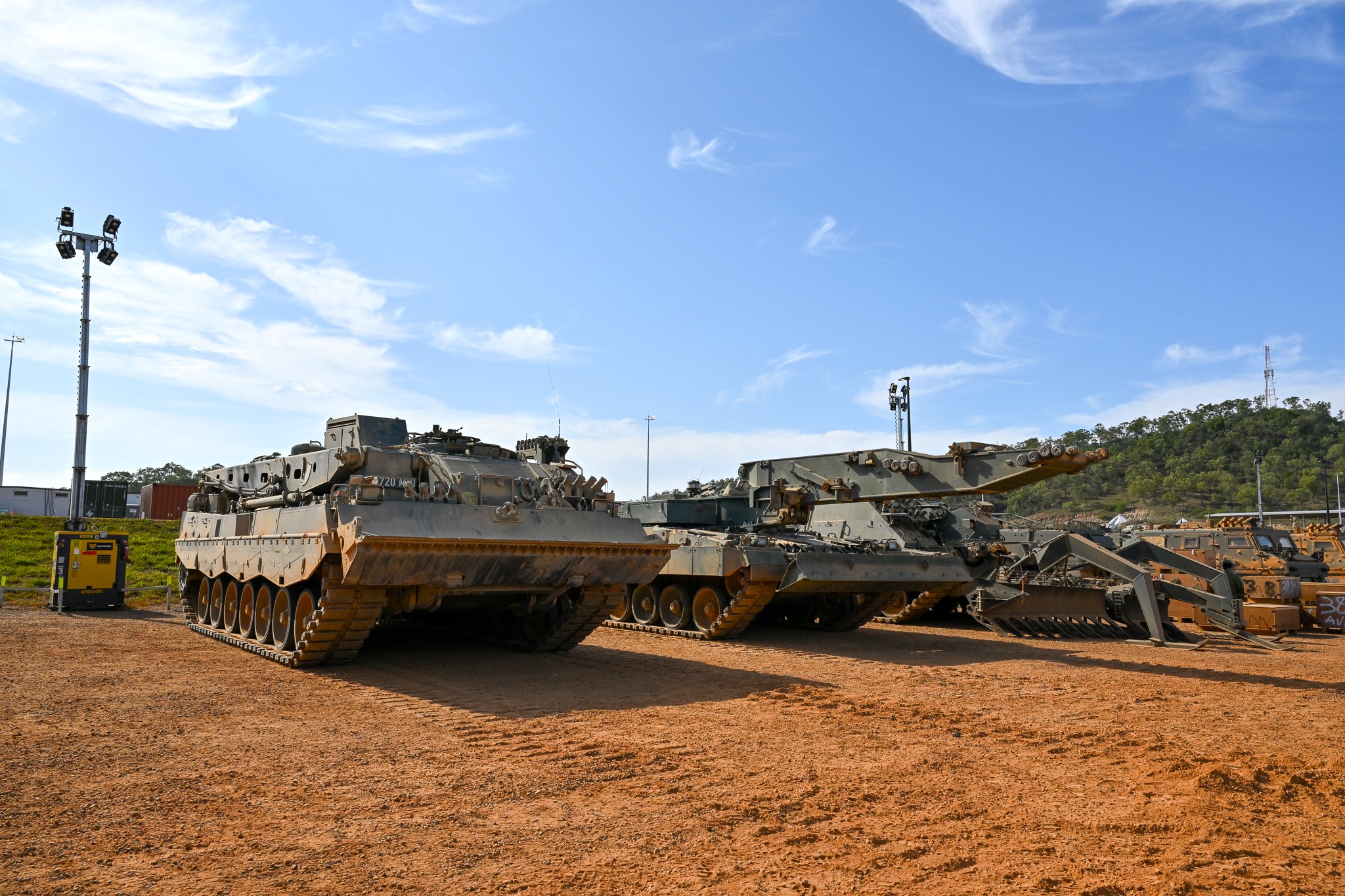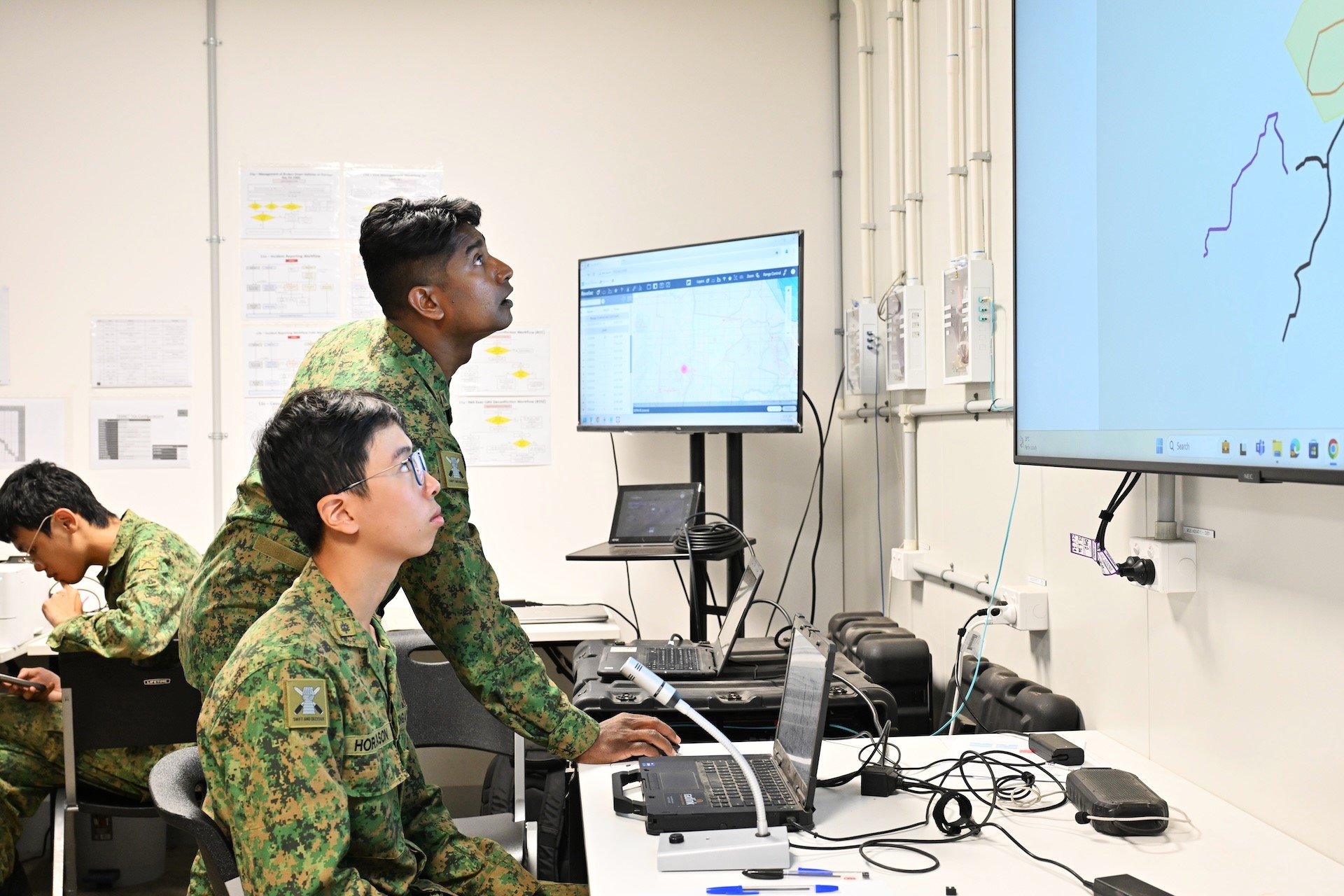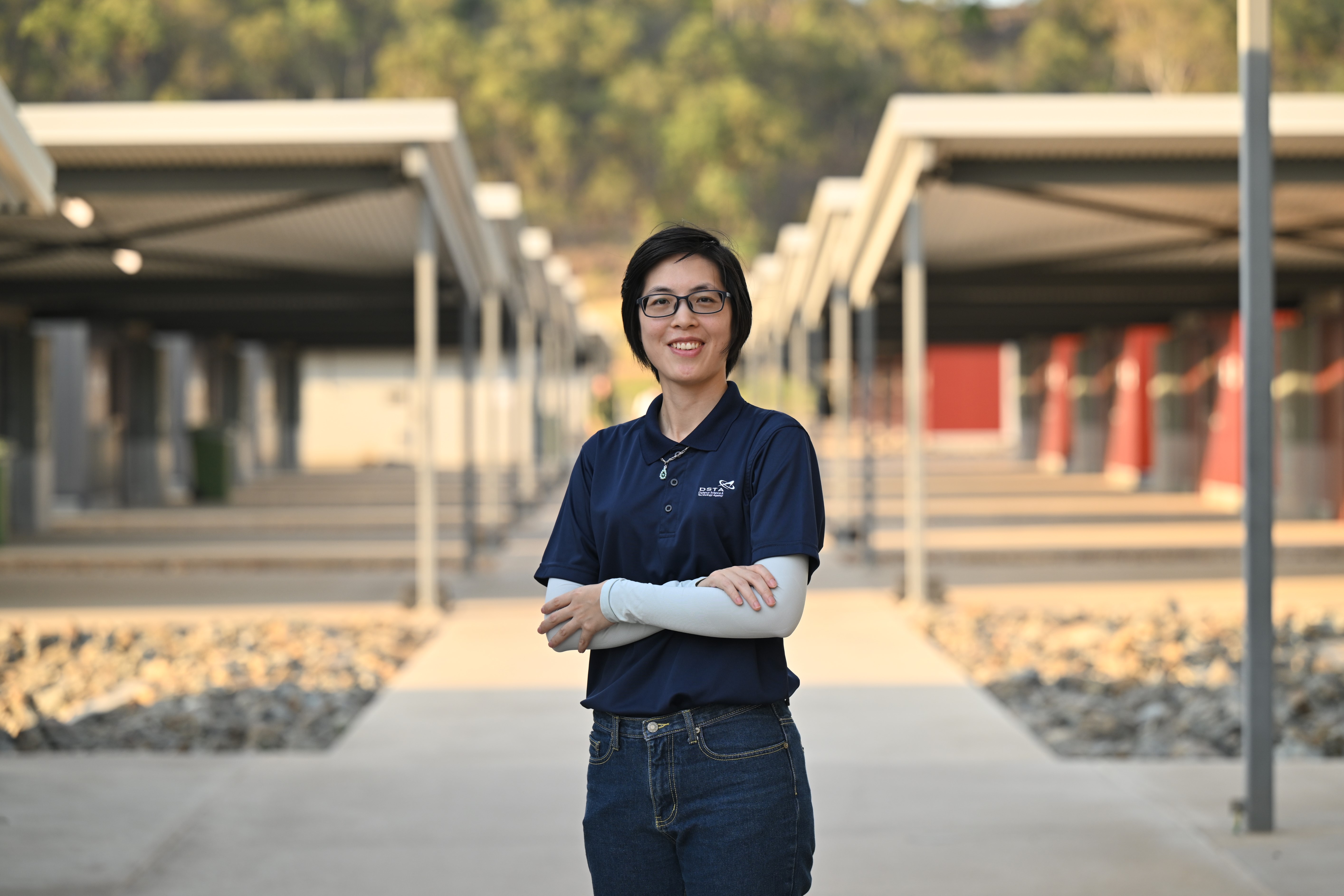OPS & TRAINING
Welcome to Camp Tilpal
14 Nov 2024
How do you house some 6,000 people and feed them for three months? You build a pop-up “city” – complete with accommodations and the basic comforts of home – for the thousands of SAF soldiers who train annually in Queensland, Australia.

For the thousands of soldiers who have trained in Exercise Wallaby, the names Camp Growl, Sam Hill and Tiger Hill are probably (all too) familiar.
Soon, Singapore troops in Australia will get to know their latest home away from home in Shoalwater Bay Training Area (SWBTA) – Camp Tilpal.
This new camp opened its gates to the first batch of Singapore Armed Forces (SAF) personnel training at Exercise Wallaby 2024 – the biggest edition in the series to date.


Home away from home
About 6,200 personnel and 490 assets took part in this year’s Exercise Wallaby, which was held from 8 Sep to 3 Nov over three training frames.
Increasing from six to nine weeks, the longer exercise duration allowed more soldiers and units – up to about 50 per cent more than previous years – to participate.
This meant the need for a place that could support the accommodations, logistics and maintenance required for the SAF’s largest unilateral overseas exercise.
Enter Camp Tilpal: Designed with the long-term in mind, these camp grounds were built with more permanent infrastructure and enhancements.
After a long day of training, soldiers can now come back to upgraded indoor shower facilities and bunks which have easy access to power outlets.
Enhanced network connectivity from built-up communication towers provides coverage throughout the camp – important for training purposes as well as for troops to contact loved ones back home in Singapore.

Setting up a new camp
For the 160-strong Forward Support Group (FSG), work started as early as January to begin preparing the camp to be ready for operation. This ranges from providing medical, logistical, maintenance and transportation support, to manging training resources and clearing hazards.

Speaking on the difficulty of the task, FSG Commander Lieutenant Colonel (LTC) Benjamin Tan noted that the group had to contend with the scale of the largest-ever Exercise Wallaby, as well as the varied needs of many units from the different Services.
“The FSG needs to tailor the support provided to each individual group, and that (adds to) the challenge,” said the 36-year-old.
For a better training experience
Network coverage is a welcomed enhancement to quality of life in camp by soldiers. For some, it’s more than just that.
Battle support teams can set up their command centre in a newly-built Exercise Control Building or EXCON. This command and control centre comes equipped with the necessary network structures such as television monitors and power points, so that troops can plug in and operate with ease.
“The (improved communication) infrastructure in Camp Tilpal allows us to have increased situational awareness of the training in SWBTA,” said Major (MAJ) Mullainathan, 34, who is the Head Control of Training.
For example, with increased connectivity from the communication tower in camp, his team can contact and use GPS (Global Positioning System) to track the different units and activities happening in this vast training area.
This helps them to ensure that training objectives are met safely, such as in deconflicting the Army’s drone flying training with the RSAF’s aerial assets in shared airspace.
A permanent place to live and train
If you take a stroll around Camp Growl, you’ll notice rows of tents filled with soldiers resting on safari beds. Or engineers carrying out maintenance on their tanks out in the sun.
At Camp Tilpal, fixed and enclosed structures mean that soldiers will no longer have to be at the mercy of the changing weather and seasons, and can focus on being their best at training, said Ms Beatrice Kwan from Defence Science and Technology Agency (DSTA).
The Senior Programme Manager of the Programme Office (Range Development), Simulations and Training Systems Hub has been a part of the project which started eight years ago, working with the Singapore Army as well as their Australian counterparts to develop the expanded SWBTA.
For personnel like Military Expert (ME) 3 Dialjeet Singh, the new camp infrastructure has given him and his team a sheltered space to work in, and more convenient access to power outlets.
The Maintenance Second-In-Charge of the workshop platoon, he has seen lower fatigue levels and higher morale among his workshop platoon this year at Camp Tilpal.
“With the (new) workshop space and power tools, we can speed up our repairs by around 50 per cent (more efficiently),” said the 46-year-old.
“Every vehicle down means the unit has one less vehicle to meet their training requirements. Quick turnaround is very important during an exercise.”
Food for the soul
Thought was also put into improving the troops’ meals. Compared to an open kitchen, Camp Tilpal’s closed kitchen lowers the risk of food contamination and allows for food to be prepared safely for the thousands of soldiers passing through at every meal.
The cookhouse can house 2,000 soldiers across two seatings.
SATS junior sous chef Bee Bee Jan Binte Abdul Kadir has been cooking for soldiers at Exercise Wallaby for five years. The sprightly 62-year-old always looks forward to coming back to serve the soldiers, whom she’s come to see as her sons and daughters.
“When they see me back here they will say: ‘Makcik (Malay for aunty), happy to see you again! We miss your food, hope you can cook for us!’,” she said happily, adding that the cookhouse would also try their best to accede to the troops’ requests for food like local pastries.
Ms Kwan, 40, is happy to see the project come to fruition, and new batches of soldiers enjoying more restful sleep and productive training: “The team feels very proud to be able to deliver this facility (and) see it come alive.
“We hope that the effort we have put in will better support our future training, as well as all our loved ones who will use this place.”
ALSO READ IN OPS & TRAINING

Exercise Wallaby 2025: To see better, shoot faster
31 Oct 2025
The SAF focuses on complex strike missions and multi-domain integration in Exercise Wallaby 2025, the 35th edition of its largest unilateral overseas exercise.

Ex Wallaby 25 – Greater Integration and Complexity
25 Oct 2025
The 35th edition of the SAF’s largest unilateral overseas exercise is an opportunity for expanded scale and deeper integration towards an effective, networked fighting force.

Ex Forging Sabre ramps up use of unmanned assets in integrated strike operations
12 Sep 2025
In this 10th edition of Exercise Forging Sabre, the SAF sharpened its cutting edge for the dynamic modern battlefield, with expanded integration between manned and unmanned platforms.













.jpg?sfvrsn=424d8cf9_2)

